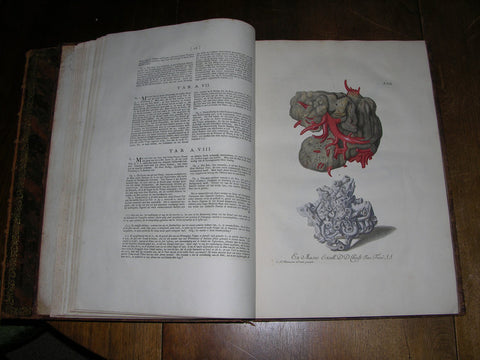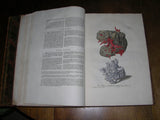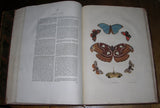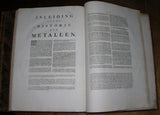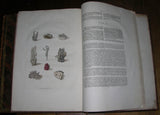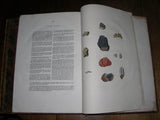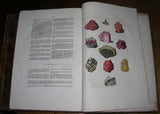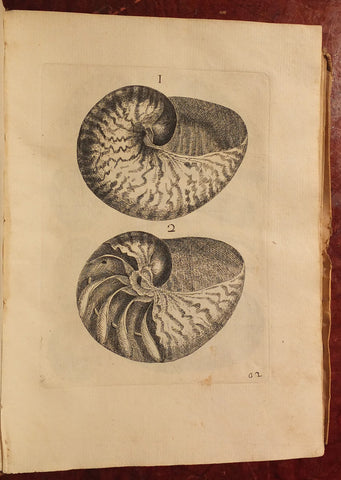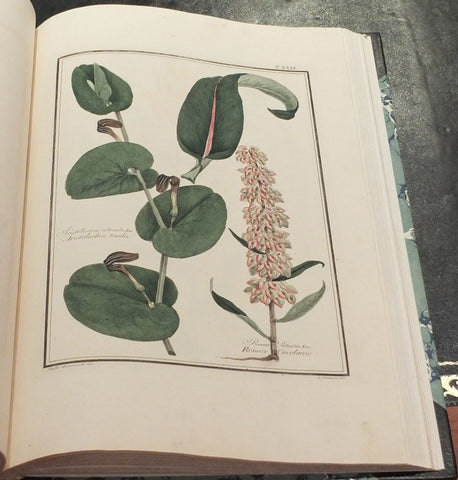Georg Wolfgang Knorr (1705 -1761) - Philip Ludwig Statius Muller (1725-1776), Deliciae Naturae Selectae of Uitgeleezen Kabinet van Natuurlyke Zeldzaamheden ...
Georg Wolfgang Knorr (1705 -1761) - Philip Ludwig Statius Muller (1725-1776)
Deliciae Naturae Selectae of Uitgeleezen Kabinet van Natuurlyke Zeldzaamheden
Dordrecht: by Abraham Blusse and Son, 1771.
2 volumes. Folio (19 6/8 x 13 4/8 inches). 4pp. list of subscribers, text in Dutch (some minor spotting to text leaves). One double-page and 90 full-page exceptionally fine engraved plates, some engraved in colour, all with original hand-colour in full (without the frontispiece found in some copies, some insignificant marginal spotting). Contemporary Dutch mottled flame calf, each cover decorated with a broad gilt border of acanthus and daisy roll tool (rebacked, spines scuffed, extremities a bit worn, neat repairs to corners).
Provenance: with the engraved armorial bookplate and ink library stamp of Hippolyte Wouvermans (fl 1893-1902), bibliophile and member of the Belgian Commissariat, on the front paste-down of each volume, and a bibliographical note by Benjamin Linnig tipped in to the front paste-down of volume one.
First edition in Dutch, first published posthumously with German and French text in 1766-1767, limited issue, number 96 of 99 copies printed, this one inscribed as such beneath the list of subscribers by the notary public in Dordrecht, P.J. van Heenbergen, guaranteeing that no copies were printed in excess of those ordered by subscribers.
"It is scarcely an exaggeration to say that the beauty of some of Knorr's illustrations exceeds that of their models and that in all cases the artist's eye has transformed neutral, natural objects into permanent, formal aspects of humanism. The detail and accuracy of Knorr's engravings not only made possible zoological classification but firmly established the distinction between fossils of organic origin and sports of nature" (DSB).
The magnificent plates include 15 of corals, 7 of shells, 6 of butterflies and moths, 4 of sea-urchins, 6 of minerals, 7 of crabs, lobsters, scorpions and spiders, 4 of starfish, 9 of fish, 7 of birds, 14 mammals and 12 of reptiles.
Knorr was an early pioneer of paleontology, and extremely accomplished engraver, and art dealer who, in his lifetime, put together a handsome collection of drawings based on the Cabinets of Curiosity and other amateur collections of natural history specimens in Holland and Germany in the early 18th century (Muller, Houttyn, Schadeloock and others), many of the examples in this book are from the collection of Christoph Jacob Trew (1708-1770), author of "Hortus Nitidissimis". Nissen calls for a portrait, although this seems to be rarely present. Landwehr 97; Nissen ZBI 2229.
We Also Recommend

